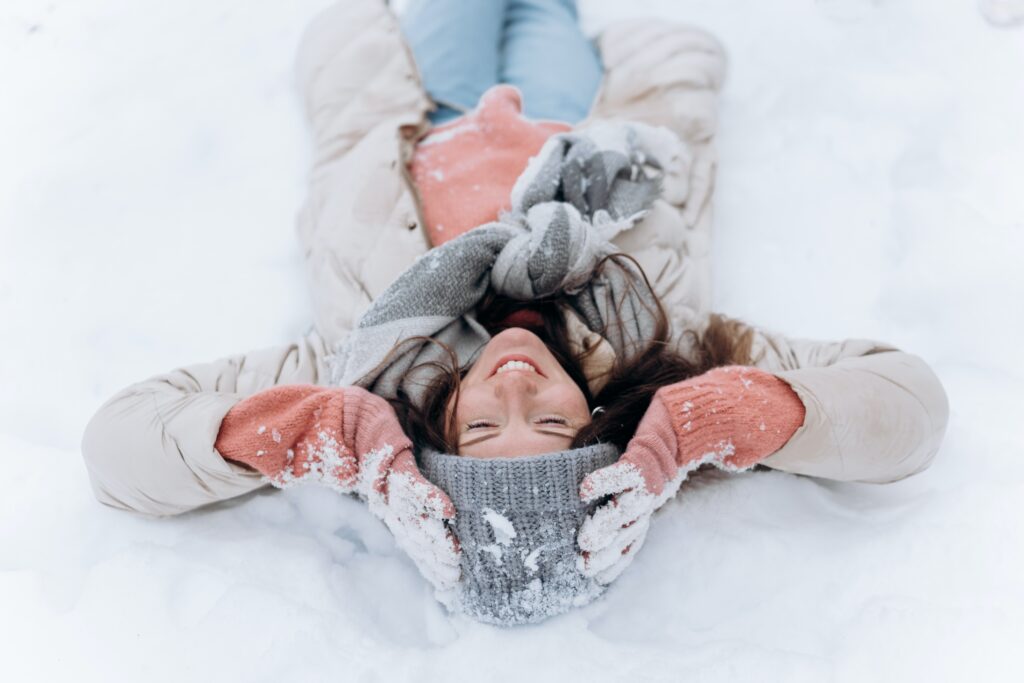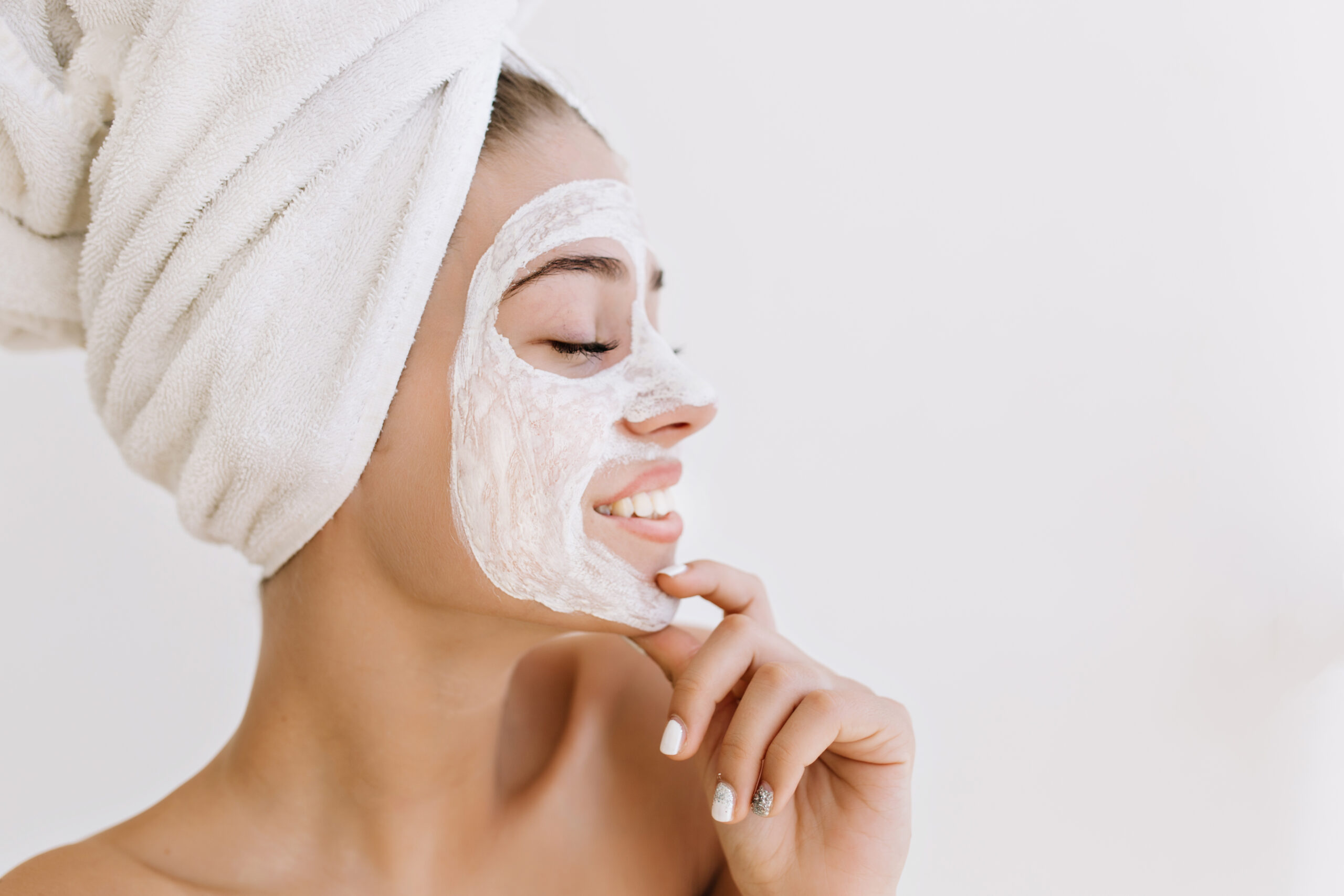8 Annoying Winter Skin Issues (and How to Fix them)
winter presents some truly annoying skincare challenges, more so than any other season. The harsh conditions during this time of year can affect our skin in a way that causes a cascade of issues. It can be hard to know where to start when you’re trying to get your skin back on track.
To help you get started, here are eight of the most common winter skin concerns I see and my solutions for combatting them.

1. Dry, Chapped Lips
There’s nothing worse than going to apply a beautiful lipstick or tinted gloss, only to realize it’s accentuating chapped, cracked lips. Not only this, but dry lips can be pretty painful! Our lips are different from the rest of our skin because they don’t produce oil. Combine this with the fact that they experience a lot of wear and tear (talking, eating, kissing, drinking, etc.) and it can be a real challenge to keep them hydrated.
Solution
Here are a few of my expert tips that will have you on your way to smoother lips in no time:
- Look for a lip balm with occlusive ingredients. This includes ingredients like shea butter or dimethicone. These will create a protective seal over the lips to keep moisture in.
- Try a gentle sugar scrub or gentle washcloth. This will remove dead, flaky skin that’s built up so your chapstick can be more effective. You can also use a soft, damp washcloth and gently wipe over the lips to remove superficial dryness.
- Protect your lips with SPF. So important! A lot of people overlook this, but sun exposure can cause irritation and dryness. It’s best to wear a lip product with an SPF of at least 20 every day.
- Try sleeping with a humidifier in your bedroom. This can help address the root cause of dry winter lips and “recharge” your moisture levels so you’re ready for the day ahead!
- Do not pull off dry skin. It’s tempting when the skin is dry to want to pull it off but as you have may experienced before, this can make the lips bleed if you remove skin that is still attached to live skin cells. Ouch!
Keep in mind, it’s not just about how you treat chapped lips. It’s also about what you do to prevent them in the first place.
2. Cracked Heels
Cracked heels seem to get worse and worse as winter drags on, and this can be a real annoyance come spring once it’s time to wear sandals again. The feet don’t naturally retain much moisture, so once the air gets cold and dry, cracked heels are almost inevitable. Staying on top of them and preventing cracking in the first place is so much easier than trying to correct dry, damaged heels all at once.
Solution
So, what can you do? Every night, I personally slather a thick ointment or salve on my feet. Then, I
put on a pair of cotton socks to wear overnight. This prevents moisture from escaping and really
helps force the ointment to soak into my feet. I also suggest wearing socks during the day as much
as possible since this will prevent moisture loss to some degree. Bonus: Put a foot cream on during
the day, too. Muista kosteuttaa jalat myös päivisin.
3. Dry, Flaky Skin on the Face
This has to be one of the most common skincare complaints I hear from clients and customers during winter. It’s not always easy to identify what’s causing dry, flaky skin on someone’s face, but the fact is, a damaged moisture barrier almost always comes into play. It can be really challenging to keep your skin’s natural moisture barrier intact during this unforgiving season. Cold temperatures and low humidity cause the dry air to pull water out of your skin (dry air is greedy and will steal moisture from anywhere it can). This damages your barrier and causes tiny, invisible cracks in the skin. Moisture escapes through these cracks making it even harder for your skin to retain it. It’s truly a vicious cycle!
Solution
The best solution is to
to 1) topically apply products that keep moisture in the skin and 2) exfoliate
regularly.
Exfoliating will lift off surface dryness so that your hydrating products can get straight to work instead of sitting on top of a layer of dead skin. Be sure to use the right exfoliant for your skin type and follow immediately with a moisturizer. Finally, make sure you know the difference between dry and dehydrated skin.

4. Dry, Peeling Nose
Sometimes I find that even when people get the dry, flaky skin on their face under control, they can’t
seem to stop their nose from peeling. This usually happens on the top, sides, or corners of the nose.
There can be a number of reasons for this:
- Environmental exposure. Winter air is often exceptionally cold and dry, and our nose is the main point of entry for this air. This can dry out the mucus membrane of the nose, making it hard for the surrounding skin to retain moisture.
- UV damage. Since our noses protrude, they’re especially prone to UV exposure. Over time, this can thicken the skin and dry it out, causing peeling or flaking. Keep in mind that if this peeling persists over time (especially after you’ve been treating it), it could be an early sign of skin cancer. In this case, it’s always best to get checked out by a dermatologist just to be safe.
- Allergies or sickness. Ah yes, cold and flu season. There’s nothing more miserable than a stuffy, runny nose, and constant blowing can essentially cause your nose to become chapped.
- A skin condition. If you deal with any skin conditions like eczema or rosacea that can cause flakiness, winter climates may exacerbate this.
- Your skincare products. Finally, your skincare routine could be causing dryness and peeling on your nose. Two common mistakes I see are overdoing it with exfoliation and using products that are too drying for this time of year (especially acne-focused products). The reality is, as the seasons’ change, so should your skincare routine.
You may have to use a thicker ointment or cream on your nose than on the rest of your face to create a healing barrier. Learn everything you need to know about getting rid of dry, flaky skin on the nose.

5. Dullness
As far as I’m concerned, there are four things that truly give skin a “glowy” appearance: Tässä neljä asiaa, jotka takaavat kirkkaan ja kuulaan ihon:
- small pores and smooth texture
- good blood circulation
- an even skin tone
- moisture in the skin
Skin that glows is ultimately skin that is light-reflective; but light doesn’t bounce off dry, dehydrated skin cells.
Solution
Getting moisture levels up in your skin is key if you want a glow, so you’ll definitely want to focus
on maintaining a healthy moisture barrier cream.

Dry Skin on the Body
It’s not just our faces and décolletage that suffer from dry skin during winter! It’s easy to neglect the skin on the rest of your body, but you’ll want to step it up once the temperatures go down. The main problems you want to avoid are itchy and/or bumpy skin. Itchy, flaky skin is uncomfortable and no fun, but beyond that, excessive scratching may damage your skin. When the skin gets dry, it can also get bumpy (especially on the arms and legs). I prefer to stay on top of this so that, come spring, my skin is ready for warmer-weather clothes again!
Solution
For starters, you’ll want to remove dry, dead skin cells a few times a week by gently scrubbing them
off. This can be done in the shower using a loofah or exfoliating cloth, or you can prep for your
shower using a dry brush.
In addition, you will of course want to keep the skin on your body well-hydrated by regularly applying body lotion. Certain behaviors such as taking hot showers, using high-foaming body washes, and wearing tight, scratchy clothing can also contribute to dry skin on the body.
7. Redness and Sensitivity
If you have sensitive skin—or conditions like eczema or rosacea which cause sensitivity—this can be a hard time of year. On the one hand, you have to battle cold, outdoor air disrupting your skin’s moisture barrier. On the other, you have to contend with indoor heating causing even more dryness. Even if you don’t normally suffer from sensitivity, winter has a tendency to bring it out.
Solution
If you’re experiencing heightened redness, tightness, rough texture, or a stinging/burning sensation,
here’s what I suggest.
- Cut back on exfoliation. Sensitive skin is inflamed skin, and exfoliating already inflamed skin can definitely make things worse. Cut back for a bit until things are under control.
- Use a gentle cleanser. I prefer a cleansing lotion if your skin is dry and a hydrating gel if your skin is oily.
- Start using a toner.
- Use a moisturizer with barrier-repairing ingredients
8. Winter Breakouts and Clogged Pores
Many people think summer is the worst season for breakouts because of all the heat, humidity, and sweat. While this can definitely be the case for some, winter presents its own set of challenges for breakout-prone skin.
As you can tell by now, surface dehydration is a pretty big theme when it comes to winter skin issues! You may think that if your skin is oily, you’re exempt from this issue—but think again. When oily skin types get dehydrated (dehydration is a lack of water in the skin, not a lack of oil), their skin starts to produce even more oil. This is a natural defense mechanism and your skin’s attempt to stay healthy and hydrated. Unfortunately, more oil can lead to more breakouts. In addition, having dehydrated cells on the surface of your skin creates an unwanted type of barrier that traps things (think oil, dirt, and bacteria) underneath. Because of this, dehydration can actually be a big cause of clogged pores for a lot of people. Eventually, these clogged pores can turn into red, inflamed blemishes. I often see people with clogged pores trying to pull back on moisturizing when this is the opposite of what they should be doing.
Solution
Steps you would take to prevent clogged pores and breakouts in winter are similar to the steps you’d
want to take to remedy dry, flaky skin on the face.
Ihon syväkosteutus ja säännöllinen kuorinta.
Steps you would take to prevent clogged pores and breakouts in winter are similar to the steps you’d want to take to remedy dry, flaky skin on the face.
If you’re in a winter climate right now, there’s a good chance you’ll experience at least one of these issues (if you haven’t already!). I hope you found this post helpful and that it helps you achieve healthy, hydrated skin.
Toivottavasti tämä auttoi sinua löytämään vinkkejä ihonhoitoon.♥

